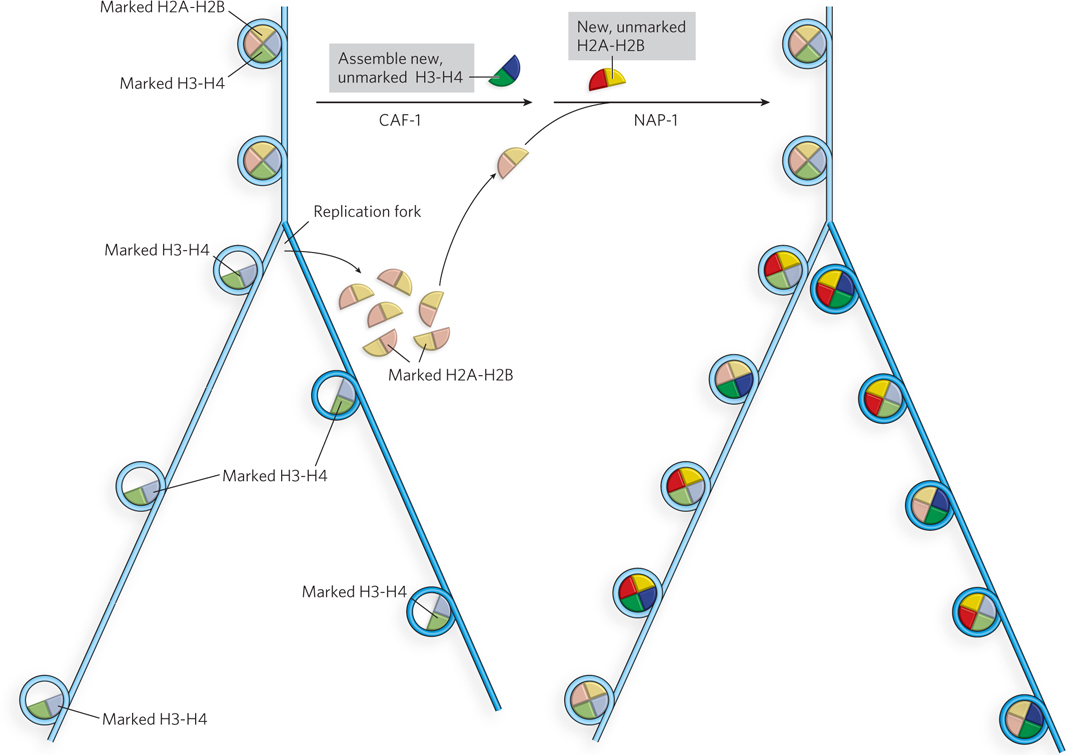
Preserving histone modification patterns during DNA replication. After DNA replication, the two new daughter duplex DNAs that are produced during replication lack histones H2A- 3- 3- 3- A- 3-